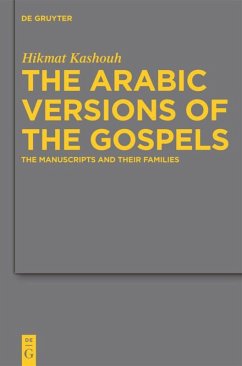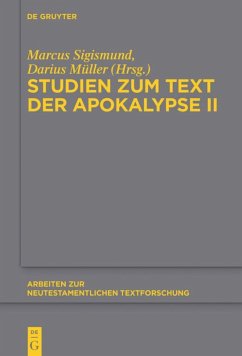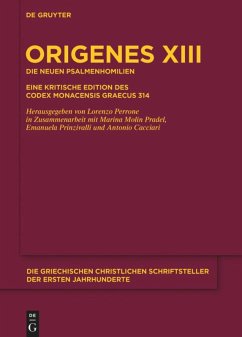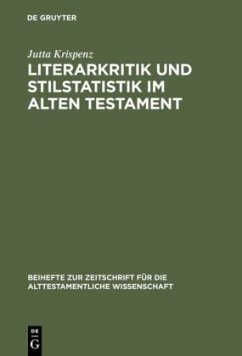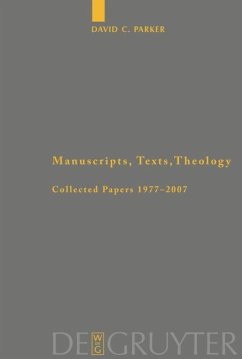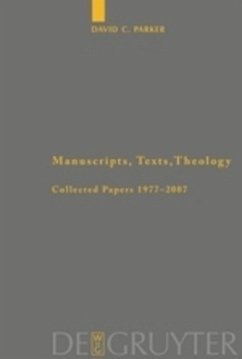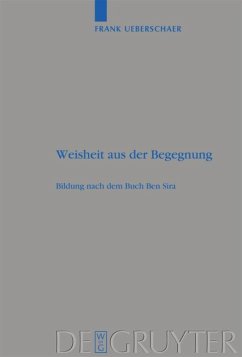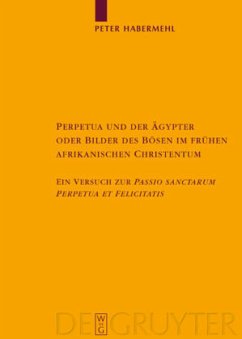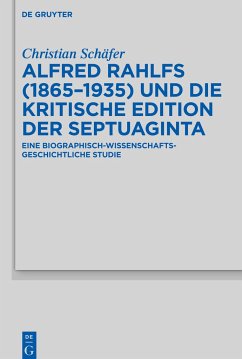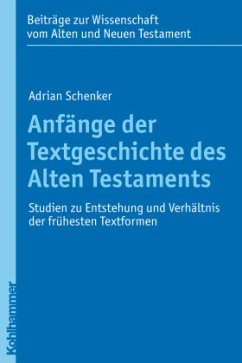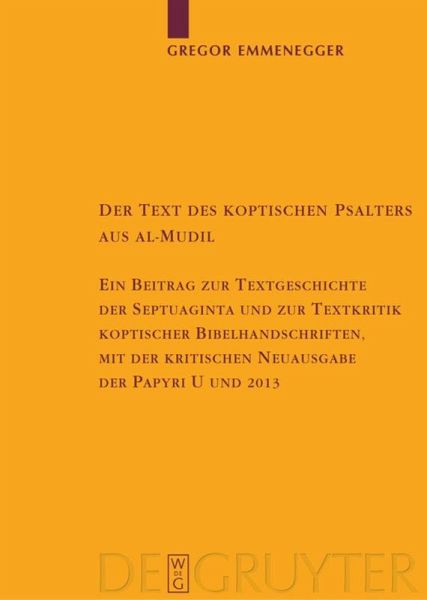
Der Text des koptischen Psalters aus al-Mudil
Ein Beitrag zur Textgeschichte der Septuaginta und zur Textkritik koptischer Bibelhandschriften, mit der kritischen Neuausgabe des Papyrus 37 der British Library London (U) und des Papyrus 39 der Leipziger Universitätsbibliothek (2013)

PAYBACK Punkte
0 °P sammeln!
Der koptische Psalmencodex aus al-Mudil ist auf Grund seines hohen Alters (spätes 4. Jhd.) und des beinahe vollständigen Textumfanges ein Kronzeuge für den Septuaginta-Psalter. Wie andere Bibeltexte, die im mittelägyptischen Dialekt überliefert sind, weist auch er viele eigentümliche Lesarten auf. Die hier vorgelegte umfassende Analyse des Textes und seiner Beziehungen zu anderen Psalterversionen führt zur differenzierten Situierung in der Textgeschichte. Es zeigt sich, dass entgegen ersten Hypothesen die Textform nicht wesentlich älter als die Handschrift sein kann. Der koptische Übe...
Der koptische Psalmencodex aus al-Mudil ist auf Grund seines hohen Alters (spätes 4. Jhd.) und des beinahe vollständigen Textumfanges ein Kronzeuge für den Septuaginta-Psalter. Wie andere Bibeltexte, die im mittelägyptischen Dialekt überliefert sind, weist auch er viele eigentümliche Lesarten auf. Die hier vorgelegte umfassende Analyse des Textes und seiner Beziehungen zu anderen Psalterversionen führt zur differenzierten Situierung in der Textgeschichte. Es zeigt sich, dass entgegen ersten Hypothesen die Textform nicht wesentlich älter als die Handschrift sein kann. Der koptische Übersetzer hat mehrere Vorlagen verwendet und versucht, auf Grund seines theologischen Verständnisses dem Psalter zu mehr Klarheit zu verhelfen. Der Mudil-Codex ist darum sowohl ein wichtiger Zeuge für teilweise sehr alte Textvarianten als auch ein faszinierendes Beispiel dafür, wie im Ägypten des 4. Jhd mit Bibeltexten umgegangen wurde.
Die Studie enthält zwei kritische Neuausgaben griechischer Papyri. Es handelt sich um die Leipziger Papyrusrolle (P. 39 / Rahlfs 2013) und das Londoner Papyrusbuch (P. 37 / Rahlfs U). Beide Texte sind für die Textkritik des Septuaginta-Psalters von höchstem Wert, da sie die einzigen griechischen Zeugen des so genannten "oberägyptischen Textes" sind, der sonst nur auf koptisch erhalten ist.
Die Studie enthält zwei kritische Neuausgaben griechischer Papyri. Es handelt sich um die Leipziger Papyrusrolle (P. 39 / Rahlfs 2013) und das Londoner Papyrusbuch (P. 37 / Rahlfs U). Beide Texte sind für die Textkritik des Septuaginta-Psalters von höchstem Wert, da sie die einzigen griechischen Zeugen des so genannten "oberägyptischen Textes" sind, der sonst nur auf koptisch erhalten ist.




